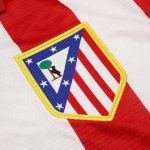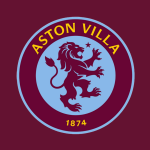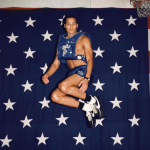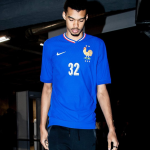
Football logos return to the past
When innovation is synonymous with tradition
September 6th, 2023
In the fast-paced, ever changing world we live in, even football clubs have to keep up. Not falling behind on trends is vital to stay relevant in the eyes of fans, especially with football and fashion edging closer and closer by the day. This is usually done with new kits, but an often overlooked aspect is a club’s logo. While they may appear as small details on a jersey, logos are crucial for a team’s identity, and their design is a lot more visually important than one may think.
“Restyling” is the key word of club aesthetics in the 21st century, and while the term is normally synonymous with “new” and “innovation”, recent examples show another reality. As is the case with the fashion industry, in fact, football has this strong fascination with the past, and logos are now at the center of it all.
Olympique Lyonnais
For next season’s away kit, the French club has decided to use an older version of their current logo, going back to the one used between 1989 and 1996. Despite those years not being particularly successful, it is the purely aesthetically pleasing, vintage nature of the logo that grants it a well-deserved return on OL’s adidas jerseys. One could even argue that even in 2023, the design does not look out of place in the slightest, proving how deep our adoration for styles of the past runs.
Roma
Roma’s new home kit has been without a doubt one of the most appreciated releases of the summer for several reasons. adidas’ return as the club’s technical sponsor was heavily anticipated, and the German manufacturer surely didn’t disappoint. The uncanny resemblance to the widely loved 1992-1993 home kit (Francesco Totti’s debut season) was enough to get the Roma crowds excited, but it is the restoration of the historic, iconic, stylized lupetto logo that has caused the most frenzy. A true symbol of the club’s glory days in the 1980s, filled with titles, legendary players, and a European Cup final. Employed between 1979 and 1997, the lupetto has always been well appreciated among Roma fans, and bringing it back - especially given the current context of the football industry - is proving to be a phenomenal move.
Lazio
2023-2024 marks the 50th anniversary of Lazio’s first ever Scudetto win, so Mizuno blessed the Rome club with a kit collection dedicated to that legendary 1973-1974 season. The away kit is particularly nostalgic, featuring the old logo used between 1978 and 1988. Funnily enough, not only was this logo not in use when Lazio first won the league, but it also symbolizes one of the club’s worst ever eras. Despite that, the badge is to this day fondly remembered both by Lazio and other Italian fans for its beauty and creativity. It might not have any ties to the 1974 Serie A win, but it nevertheless represents an important piece of Lazio history that deserves to be celebrated.
Barcelona
As part of the “Here to lead the way” campaign that highlights Barcelona’s history and importance, the blaugrana’s 2023-2024 away kit with Nike is a tribute to the 1970s, characterized by the club’s first developments of a female section, as well as Johan Cruyff’s five year stint between 1973 and 1978. Today, it is clear how important these two events were for Barcelona history and its current values, so the club decided to honor that with a reintroduction of the logo from those years.
Atalanta
For the next away kit, Atalanta and Joma also included an old logo instead of the current one. Although the two are very similar, the one used between 1984 and 1993 is the perfect example of a trend that was very big on stylization and simplification in ‘80s and early ‘90s Serie A. This is another case in which the intention behind the logo choice is completely aesthetic and has little to do with reminiscing on past success.
Udinese
For 2023-2024, Udinese and Macron decided on a makeover for the home kit, ditching the usual black-and-white stripes for a sole black stripe in the middle of the shirt, as well as reverting back to the zebretta logo of the 1970s. This means, like in Lazio’s case, that the design of the kit and the logo are from two different eras, as the black stripe down the middle is from the mid-1980s days with legend Zico. Regardless, the change signifies a celebration of Udinese’s history, symbols, and traditions.
Aston Villa
As for Aston Villa, the club changed their club logo completely, replacing the current one for the one used during the 1980s, or, in other words, Villa’s best years. Between 1980 and 1990, in fact, the club won a league title, a European Cup, a Charity Shield, and a UEFA Supercup, all while proudly donning the round logo that will take over starting next season. A good luck charm?
Atlético Madrid
And finally, Atlético Madrid. The new logo, like in Aston Villa’s case, is a complete change that has nothing to do with any specific kit, although the reason behind it is quite different. Atlético Madrid didn’t undergo any sort of rebranding to stay relevant, but rather saw its logo get voted out by fans, unhappy with the unnecessarily modern take on the club’s traditional badge. The previous one had gone almost 70 years (1947-2016) with virtually no changes, and after 6 years after its replacement, it will be welcomed back onto the Colchoneros’ shirts and once again represent the club.




















